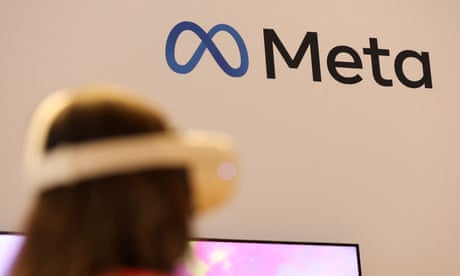- by theguardian
- 21 Sep 2023
Meta’s virtual reality project will finally have legs – literally
Meta’s virtual reality project will finally have legs – literally
- by theguardian
- 13 Oct 2022
- in technology

A year after changing its name, the company formerly known as Facebook has revealed its plans to give the metaverse legs - literally.
Mark Zuckerberg's virtual reality project is getting a raft of additions including a $1,499 (ÂŁ1,356) "pro" headset, integration with Microsoft Office and the sitcom The Office, and, yes, the ambulatory appendages.
Legs join shoulders and knees, though not yet toes, as part of an upcoming visual overhaul of the avatars in Meta's Horizon virtual worlds, Zuckerberg revealed. Currently, other users simply hover slightly above the ground, with heads, arms and torsos rendered in a cartoony style but bodies ending at the waist. As a result, legs are "probably the most requested feature on our roadmap", the chief executive and co-founder said. "But seriously, legs are hard, which is why other virtual reality systems don't have them either."
The company's systems will now try to guess the position of users' legs and feet using a number of inputs, from direct visual tracking using front-facing cameras to more advanced attempts to predict their movement with just the motion of the head and hands, based on models of human anatomy.
Derision of Horizon's avatars has prompted irritation from Zuckerberg in the past. In August, a post from the Facebook founder of his glassy-eyed figure standing in front of a virtual Eiffel Tower went viral on social media, with people mocking the vaguely soulless appearance of the virtual world. In response, he shared a render of a more realistic version of his virtual face a few days later. "I know the photo I posted earlier this week was pretty basic - it was taken very quickly to celebrate a launch," he said. "The graphics in Horizon are capable of much more."
While legs may have been the most-requested feature, the star of Meta's Connect event was the Quest Pro headset, a new business-focused device that will sell for $1,499 and push what is possible in virtual reality forward. The headset introduces two new headline features to Meta's VR lineup: eye tracking and "passthrough" mixed reality.
The former uses tiny cameras mounted on the inside of the headset to track where in the virtual world a user is looking. That lets developers offer experiences that respond to a user's attention, from virtual characters that react to being looked at to interfaces that can be activated with a glance. But it also enables whole new levels of surveillance, with advertisers potentially able to assess exactly who has looked at what promotions for how long.
- by travelpulse
- descember 09, 2016
Resort Casinos Likely Scuttled Under Amended Bermuda Legislation
Premier announces changes to long-delayed project
read more





